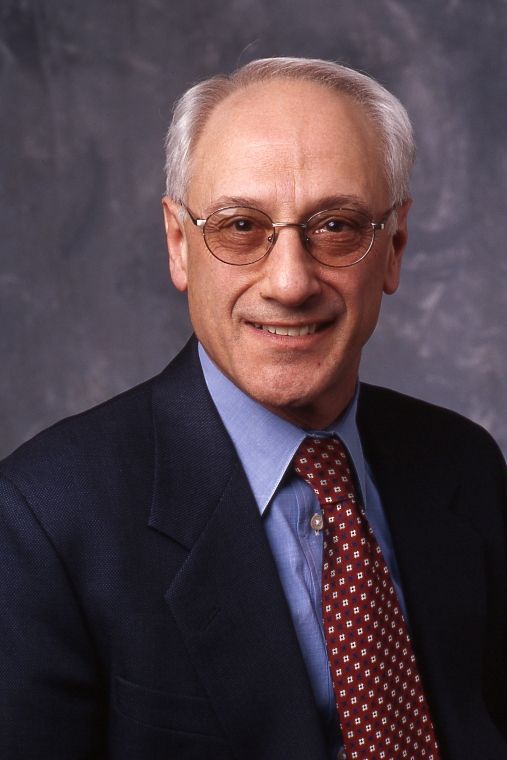Executives debate exchange viability, Obamacare
What is the future of Healthcare Exchanges? And what is the future of Obamacare in general? Healthcare executives weigh in.
As more plans opt out of healthcare excanges, and as the 2016 election approaches, we asked healthcare experts to weigh in. In this executive debate, they answer the question: What is the future of healthcare exchanges and Obamacare?



Viewpoint: Exchange problems are solvable, but health policy experts must get on board
By Jon Kingsdale, PhD

KingsdaleDespite disappointing enrollment in the new health insurance exchanges-half the 20 million or so originally projected-Obamacare is alive and doing pretty well. It has covered over half the 36 million (legally present) Americans who were uninsured in 2010. With the expansion of Medicaid eligibility to all states, as originally conceived, that fraction would approach three-fourths covered.
Other projections are on target: Medical inflation has been relatively modest; federal spending on the ACA is below target; employer-sponsored insurance has held up better than projected; Medicare Advantage plans continue to grow, even as federal payment changes wring big savings from them; and medical providers are participating in a raft of Medicare and private reimbursement experiments.
Indeed, passage last year of the Medicare Access and CHIP Reauthorization Act can be read as bipartisan endorsement of the new direction for Medicare reimbursement tentatively charted by the ACA.
Even the partisan criticism has modulated. For example, when was the last time you heard a Republican Presidential contender criticize Obamacare as a “job killer”?
But public health insurance exchanges, the shiny new thing in health reform, have lost their luster. Most states were expected to sponsor their own insurance marketplaces. They did not.
Worse still, enrollment has plateaued at a disappointing 10 million. At their core, marketplaces are online stores, in the business of selling health insurance. Indeed, most of them are financially dependent on “user fees:” the more they sell, the more their operating revenues grow. But they aren’t selling well. Importantly, low enrollment also seems to correlate with a sicker, more expensive risk pool, as the young, so-called “invincibles,” stay away.
As a result, the intense price competition that had kept premiums relatively low in the early years is now under threat. We have already witnessed the very public retrenchments of Humana, United and Aetna. Rather than a wholesale rejection of the ACA’s underwriting rules, these withdrawals represent strategic re-assessments, state-by-state, of the risks and opportunities. Because national carriers do not generally enjoy the best discounts on hospital and doctor reimbursement, this strategic retreat is neither surprising nor too concerning. A competitive market must punish higher cost health plans and reward lower prices.
However, it is a big PR “hit” to marketplaces, and threatens to further undermine the commitment of the Blues and other regional health plans to compete on price. Were these other plans to withdraw, too, the large premium increases announced for 2017 could become an annual “blood-letting,” rather than a one-time patch for carriers that originally priced below cost.
How this shakes out for marketplaces is still TBD. With their monopoly on federal tax credits and access to a broad array of health plans, they ought to be able to “crush” other direct-to-consumer distribution channels. But that would require sophisticated sales expertise and a sustained commitment to marketing.
Selling highly subsidized insurance is not rocket science. Government-run marketplaces could marshal the business expertise to generate healthy growth, but commercial sales is not exactly a core interest of public policy types.
Alternately, liberals might see the advantage of privatizing marketplace sales and operations, but this would require trust and effective management of a private sector that has so often frustrated liberal health policy types.
In the absence of either approach to a readily solvable challenge, I am afraid that marketplaces will continue to disappoint and, worse, could threaten the ACA’s comprehensive reform of individual health insurance.
Jon Kingsdale, PhD, is a managing director at Wakely Consulting Group and associate professor at Boston University School of Public Health.
Viewpoint: The ACA and health insurance exchanges aren’t going anywhere
By Antoinette Kraus

KrausHeadlines once again predict doom and gloom for Affordable Care Act and the health insurance marketplace. Is it that bad? The uninsured rate in the United States hit a record low last month, falling below 9%, and nearly cutting the uninsured in half. While several large insurers decided to pare down their offerings, over 11 million people throughout the country will continue to shop and purchase plans in the marketplace, gaining quality, affordable health insurance.
Despite Aetna announcing intentions to leave 11 out of 15 states in which it currently participates, other insurers including Centene and Molina are profiting, or expect to profit on the marketplaces. In fact, Cigna is planning to expand its presence to three new states in 2017. In my own state, we saw the local issuer, UPMC, make bold moves to expand its offerings and it has even stated that while it will take a slight loss in the upcoming year, it sees the long term viability.
Honestly, many companies were more optimistic in their initial projections. Their models of the risk pool were too heavily based on existing small group data, when, in reality, they should have been based more on what we know about the populations in Medicaid managed care.
We have not yet seen the leveling off of claims data. This should not be a shock. The Affordable Care Act relieved pent up demand for care by bringing hardworking Americans into a healthcare system that they were shut out of for years. Companies previously profited by keeping people out, providing skimpy coverage, or denying claims. The result: Many sick people need care. Now the hens have come back to roost.
At the same time, Congress could have done more to support the risk corridors-now on their way out-and fixed the reinsurance payments. It was never realistic to expect that all the problems in our healthcare system could be fixed in one law. We need bipartisan action with mutual comprise to ensure that Americans have the coverage they earned. We can and should do more to bring down premiums and lower out-of-pocket costs. We need to address the skyrocketing cost of prescription drugs and make sure we are building a system that lowers overall healthcare costs and increases the quality of our care. We need to continue to make sure people understand their coverage options and enroll.
The Affordable Care Act, while not perfect, is not going anywhere. We need to build on its strengths and fix its weaknesses. The bumps in the road reflect the reality of the time it takes to fix a broken healthcare system.
Antoinette Kraus serves as founding director of the Pennsylvania Health Access Network (PHAN). Since the passage of the Affordable Care Act, Kraus has helped to build one of Pennsylvania’s largest statewide enrollment operations as a federally funded navigator organization. PHAN has enrolled over 4,800 individuals in health insurance coverage in over two thirds of Pennsylvania’s counties and in every geographic rating area in the Commonwealth.
Viewpoint: The exchanges are in peril, but there are opportunities for stabilization
By Caroline Pearson and Megan Olsen

PearsonInsurance exchanges were the lynchpin of the coverage expansions set forth in the Affordable Care Act (ACA). However, recent health plan exits for 2017 exchanges underscore the substantial challenges facing the market. Efforts to stabilize the market will require a range of solutions, some of which may exceed existing regulatory authority, requiring legislation.

OlsenDue to announced carrier exits from exchanges, there will be less competition and choice available in the 2017 plan year. Specifically, 36% of regions in the U.S. may only have one issuer participating in 2017, compared to only 4% of regions with one carrier in 2016, according to a recent Avalere analysis. As a result, consumers may not be able to choose among plans with different provider networks and drug formularies. Furthermore, competition has been effective at holding down insurance premiums, and lack of multiple plans in a region could lead to higher prices in the long term.
The instability contributing to these exits is largely driven by three key issues in the market: low enrollment, significant churn in the market, and ineffective risk mitigation programs.
1. Low enrollment
While exchange enrollment has grown modestly each year since 2014, enrollment remains significantly lower than was originally projected when the law was passed, and we do not anticipate significant growth in future years. Initial enrollees were expected to be those with the highest healthcare needs-who had wanted insurance before 2014 but did not have access to coverage or could not afford it. Future enrollees were expected to be healthier and would contribute to a more balanced risk pool. However, failure to enroll large numbers of these younger, healthier individuals makes it harder for plans to spread risk across consumers who are generally older, lower-income, and have higher healthcare costs than the commercial market. A smaller market may also be less attractive to health plans making participation decisions.
2. Enrollment instability
There is significant churn in the exchange market as enrollees move in and out of Medicaid and commercial coverage, as well as dropping insurance altogether. Particularly, some individuals are enrolling for only part of the year, consuming significant amounts of healthcare services and costs, and then dropping out of coverage. This churn not only leaves health plans with significant costs that exceed paid premiums, but it also limits their ability to invest in preventive care and long-term treatments.
3. Risk mitigation programs
Imbalances in the market are supposed to be corrected through a series of risk-mitigation programs. However, two programs-risk corridors and reinsurance-will sunset in 2016. The third-risk adjustment-is inaccurate and unpredictable for plans. Not only is it hard to estimate how the risk adjustment model will impact individual plan finances each year, but it underpays for certain populations, including healthy individuals with no chronic conditions and enrollees using some specialty drugs.
The Obama Administration has already taken regulatory action to begin to address these issues and further effort will be needed to enhance outreach efforts to grow enrollment, tighten special enrollment period rules, and modify the risk adjustment model. However, broader legislative changes may be necessary to save the market. Those could include the re-introduction of other risk mitigation programs to limit the premium impact of high-cost enrollees, changes to benefit designs to make coverage more attractive to healthy individuals, and/or modifications to subsidies and penalties within the ACA. Such legislative changes are not likely before 2017 and, importantly, could reopen larger ACA debate and present opportunity for a host of reforms to be considered.
Caroline Pearsonis senior vice president of policy & strategy at Avalere Health. h Megan Olsen is a senior associate in the policy practice, Avalere Health.
Viewpoint: Obamacare's 'death spiral' is plain for all to see
By Sally C. Pipes

PipesWant proof that Obamacare's health insurance exchanges are doomed? Just look at what the law's former supporters say about them now.
Princeton economist Uwe Reinhardt, who in 2013 predicted that Obamacare would "flourish" over time, now warns that the exchanges have entered a "death spiral."
Aetna CEO Mark Bertolini called the exchanges "a good investment" as late as April 2016. By August, he said that the "structural challenges facing the public exchanges" had become so dire that the company would withdraw from 11 of the 15 it had participated in.
Other insurers are similarly beating a path to the exits. The ones that remain are hiking their premiums and deductibles, narrowing their networks, and lobbying for relief from the federal government.
But it's too late. As the Obama administration draws to a close, it's looking increasingly likely that the exchanges will meet their end, too.
The coming death spirals were entirely predictable. Several states implemented Obamacare-style insurance regulations in the 1990s-guaranteeing coverage for all comers, regardless of health status or history, and limiting how much more insurers could charge those who were old or sick relative to the young or healthy. The insurance markets in those states have been a mess since.
Washington state did so over 20 years ago. After just six years, every insurer had left the individual market.
Starting in 1992, New York adopted similar community rating and guaranteed issue mandates. Predictably, people waited until they got sick to sign up. Claims costs skyrocketed. Insurers had to hike premiums to $6,000 a month in some cases. No ordinary consumer could afford such coverage, so New York's individual health insurance market shriveled from 1.2 million people to just 31,000 by 2010.
The same fate awaits Obamacare because the individual mandate penalty which fines people the greater of $695 or 2.5% of income for not having health insurance-is too weak to force young, healthy people to enroll in the exchanges.
Switzerland has an Obamacare-style individual mandate. But in 1996, when the country instituted its mandate, 97% of Swiss were already insured. And as Reinhardt has noted, the Swiss mandate only works because it levies harsh fines on the uninsured-even garnishing wages when necessary.
Such statist intervention is neither desirable nor politically feasible in America.
As a result, healthy Americans will continue to forgo insurance, pay the low penalty, and hope they don't get sick.
It's tough to blame them. The lowest-cost exchange plans have premiums of roughly $3,000 a year-and deductibles over $5,700. Even if they do become ill, it's tough to swallow nearly $9,000 in expenses before insurance even kicks in.
As young people shy away from the exchanges, insurers' risk pools will only grow older and less healthy. Obamacare's exchanges need young people to comprise 40% of enrollees to be sustainable, according to the Congressional Budget Office. They currently make up just 28 percent.
To stay afloat, insurers can try to raise rates and squeeze providers for lower reimbursements. But such moves ultimately make plans less attractive to healthy people. As more and more healthy people opt out, the mix of enrollees grows older and sicker. A death spiral is the investable result.
Obamacare's exchanges are not long for this world. It's up to a new Congress-and a new president-to understand this reality and implement healthcare reform that actually delivers affordable, accessible, quality care for all Americans.
Sally C. Pipes is president, CEO, and Thomas W. Smith Fellow in Health Care Policy at the Pacific Research Institute. Her latest book is The Way Out of Obamacare (Encounter 2016). Follow her on Twitter @sallypipes.
Viewpoint: Exchanges are core vehicles. Obamacare is Frankenstein, (he wasn’t really a bad person) and parts of it may self-destruct.
By Jay Wolfson, DrPH, JD

WolfsonHealthcare exchanges were and are intended to serve as the vacuum funnel to facilitate the creation of a national beneficiary population. This population is to be brokered-out to qualified, participating health plans in a market where private financial services organizations serve as the assumers of actuarial risk and are responsible for the negotiation of and payment for healthcare services. To accomplish this goal, exchanges are essential. Exchanges under the Affordable Care Act (ACA) do not define the benefit elements of health plans. They do not negotiate premium levels. They do not regulate or manage health plans. But if the integrity of the benefit plan created through the ACA itself is flawed, the exchanges may be viewed as the messengers, if not the cause of the flaw.
Healthcare exchanges operated long before the creation of the Affordable Care Act. In the 1980s, many small businesses created purchaser groups or alliances, pooling beneficiaries to leverage bargaining power. They are great ideas and they have worked for more than 30 years. The healthcare exchanges established through the Affordable Care Act envisioned a combination of public and private, state and regional pooling entities that would not be industry specific; would act as insurance brokers for millions of people, some of whom benefiting from premium subsidies; leading to the “enrollment” of all Americans in some form of health benefit plan. The expectation of the Act was that the exchanges would be created by each of the states and/or by private entities. The default provision was that the Federal government would step in to finance and run exchanges in those states not choosing to form and run them. Widespread political disaffection for the Affordable Care Act led to a direct association of exchanges with the Act. As a consequence, most states elected not to participate in running exchanges or partnering with the federal government, leading to federally operated programs for most of the nation.
Vested interests ostensibly benefiting from and initially in support of the exchanges as enrollment vehicles for the ACA were hospitals, physicians, financial services corporations (insurance and managed care companies) and patient/consumer advocates. Hospitals and physicians envisioned reductions in charity and unfunded care; financial services organizations envisioned huge cash inflows associated with new premium subscriptions (subsidized and non-subsidized); and patient advocates heralded the prospect of increased access. While enrollment in the ACA has reached an estimate of more than 16 million people, the expectations of the vested interests have not been fully met-but that has far more to do with the substance of the ACA than the intent and functioning of the exchanges.
Hospitals and physicians have benefited from getting some payment for what had previously been charity and uncompensated care. But they have been stuck with sizable deductibles that had to be collected directly from patients. Financial services organizations have experienced mixed results, in good part as a consequence of the combination of adverse risks in the pool and an adjustment factor to the federal premium supplement that may not accurately incorporate risk factors, thereby underfunding the premiums paid to the major qualified health plans. Many of the large financial services organizations have elected to withdraw from the ACA because of ostensible losses sustained from this disparity. For patients, it is a mixed story. Fully or substantially subsidized patients pay little or nothing to access care, even if they continue to use more expensive emergency rooms as portals of entry. Those without subsidies, especially those who purchase lower-cost bronze and silver plans, find that the deductibles and copayments can exceed $7,000-the out-of-pocket amount that patients must pay before their benefit plan kicks in. Recent studies have indicated that a growing percentage of ACA insured beneficiaries are choosing to avoid seeking care because they don’t have that kind of cash available to them. Add to that a reported reluctance among some providers to accept ACA patients due to dissatisfaction with reimbursement provisions. And, it is important to note that the single, leading cause of personal bankruptcies in the U.S. Is healthcare costs.
A response, therefore to the two-pronged question about exchanges and Obamacare is: The principle of healthcare exchanges is central to the success of any marketplace dependent health benefit product in which the government does not serve as the actual insurer or the provider of services. Exchanges are great ideas and have proven to be successful vehicles for facilitating not only the navigation of people into plan pools, but in the ideal sense, effectively negotiating terms of reimbursement with financial services organizations. When the negotiation and plan design functions are left to the government, the exchanges have little or no power and serve principally as recruiters (navigators).
The structural and substantive components of the Affordable Care Act contain many serious flaws. But they also contain remarkably attractive and widely desired elements such as the elimination of pre-existing conditions and policy limits, permitting children to be members of their parents’ plans up to age 26, the elimination of the moronic “doughnut hole” in Medicare Part D and community premium rating. Another less visible, albeit critically attractive feature of the Act includes the transition to value-based reimbursement for health services: Payment for good outcomes rather than for just doing things. The significant causes for disaffection with the ACA relate to a general mistrust in the motives and capacities of the federal government, and a legitimate fear among states that they will wind up assuming huge, unfunded burdens for people if and when the federal government is unable to continue subsidies. Additionally, if more financial services organizations leave the marketplace, who will serve as the fiscal intermediary and payer?
Many believe, regardless of political affiliation, that the train has left the station with respect to some form of broader-based access to health benefit coverage for Americans. It may be politically and functionally impractical to stop that train without either a very substantive alternative set of tracks or a derailment. Parts of the ACA may already be self-destructing. The exchanges are enrollment vehicles in their present form. And the Affordable Care Act is like Frankenstein-an experiment that has sought to sew together pieces of a long-dysfunctional system to fulfill a vision of what could be. But in end, Frankenstein turned out to be a "good person”, albeit feared and hated, who may have self-destructed. The vision of what could be in healthcare that, in part, drove the creation of the ACA is something of a Bobby Kennedy thing: There are those that look at things the way they are, and ask why... I dream of things that never were, and ask why not?
Jay Wolfson, DrPH, JD, distinguished service professor, public Health, medicine and pharmacy; associate vice president, USF Health; senior associate dean, Morsani College of Medicine, University of South Florida.
Viewpoint: Despite problems, there’s more good news than bad about the Affordable Care Act
by Sara R. Collins, PhD

CollinsThe latest federal survey data released in September provided yet more good news about the effect the Affordable Care Act is having on Americans. The number of uninsured people in the United States has fallen by more than 21 million since 2010. Uninsured rates have declined across all age and racial and ethnic groups, with young adults and Latinos making particularly large gains in 2015. People with low- and moderate-incomes, who were most at risk of lacking coverage prior to the passage of the law, are experiencing steady declines in their uninsured rates.
Recent Commonwealth Fund supported research shows that these gains in American’s health insurance coverage are reducing people’s out-of-pocket costs, improving access to healthcare, and leading to better health. The majority of enrollees in both marketplace plans and Medicaid are satisfied with their health plans and doctors. And the law’s subsidies have made premiums and cost-sharing for low- and moderate-income adults enrolled in coverage through the marketplaces comparable to what people pay in employer plans.
Questions raised
Despite this evidence of progress, news headlines have raised concerns about the 2017 open enrollment period and the future of the marketplaces themselves. This year, premium requests by carriers have been higher on average than last year. And three large insurers have announced they won’t sell plans in several state marketplaces next year.
But it is important to put these developments in context. Part of the reason for the premium increases this year is the phase-out of the law’s temporary reinsurance program, which reimbursed carriers for high claims costs. The program has lowered premiums by as much as 14%, and without it carriers are raising their premiums to compensate. In addition, Congress prevented the other temporary premium stabilization program, the risk corridor program, from paying carriers more than the balance of funds collected from insurers.
But even if final premiums in many plans are higher this year, most people who will enroll in marketplace plans
will not pay much morethan they did in 2015. This is because more than 80% of marketplace enrollees
receive tax creditsto help pay their premiums which means most of the increase will be absorbed by the credits. Marketplace customers are also
highly price-sensitiveand will likely shop for the best deal. Last year, people who received tax credits through the federal marketplace experienced an average premium increase of only 4%.
This price sensitivity has triggered intense price competition in the marketplaces. This is likely a factor in the exit by the large insurers. An analysis by the
Urban Institutesuggests that some of the large insurers that departed many marketplaces were not the most price competitive in some markets: Blue Cross Blue Shield Plans, Medicaid managed care plans, health provider–sponsored plans like Kaiser Permanente, and smaller regional plans have been more so.
Several carriers have also complained about unfavorable risk pools-too many people with health problems. Yet the law’s permanent risk adjustment program enables insurance companies with sicker enrollees to share their costs with insurers who have healthier members. While not perfect, the risk adjustment program has largely functioned as intended, according to several analyses. The risk pools also appear to be improving: A Department of Health and Human Services report released this month that found people in the individual market nationally were likely healthier as a group in 2015 than they were in 2014.
Moving forward
To continue the law’s progress on coverage and achieve stability in the marketplaces, policy makers and industry leaders have several options. Most importantly, all states can accept the federal dollars available to them and expand their Medicaid programs. In addition to covering their poorest residents, a recent analysis by HHS found that states that move forward may realize an unintended benefit: marketplace premiums
were 7% loweron average in states that had expanded eligibility for Medicaid.
Greater investment in federal and state enrollment outreach and assistance efforts would increase awareness of the marketplaces and help people complete the enrollment process.
Extending the law’s temporary premium stabilization programs for insurers would encourage them to continue to participate in the marketplaces and help keep premiums affordable over time. The Medicare prescription drug program has permanent reinsurance and risk corridor programs both of which, along with a risk adjustment program, have been integral to the program’s success.
Since research shows that many eligible adults who haven’t enrolled cite affordability concerns, enhanced subsidies and lower cost sharing may be needed to facilitate enrollment. Finally, immigration reform would also help increase the number of people eligible for coverage, as would easing the law’s restrictions on coverage of undocumented immigrants.
Universal insurance coverage in the United States is integral to our health system’s ability to deliver high quality, coordinated care at an affordable cost. The Affordable Care Act has provided a structure for the nation to achieve this end. But its ongoing success will require the commitment of policy makers and industry stakeholders in the years to come.
Sara R. Collins, PhD, is vice president for Health Care Coverage and Access at The Commonwealth Fund.
In this episode of the "Meet the Board" podcast series, Briana Contreras, Managed Healthcare Executive editor, speaks with Ateev Mehrotra, a member of the MHE editorial advisory board and a professor of healthcare policy and medicine at Harvard Medical School. Mehtrotra is also a hospitalist at the Beth Israel Deaconess Medical Center in Boston. In the discussion, Contreras gets to know Mehrotra more on a personal level and picks his brain on some of his research interests including telehealth, alternative payment models and price transparency.
Listen